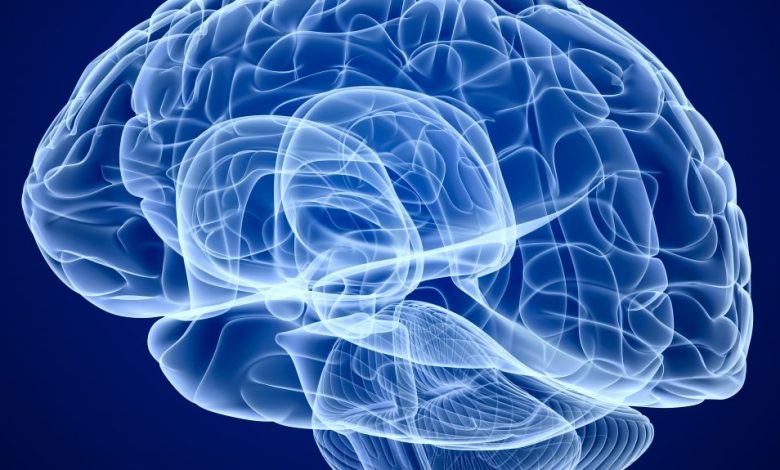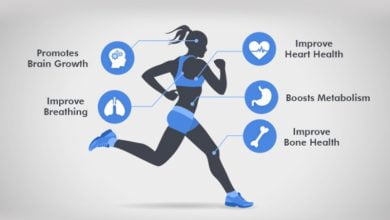The Power of Neuroplasticity: Unleashing the Potential of Your Brain for Personal Growth and Transformation

Introduction:
Neuroplasticity: The Remarkable Adaptability of the Brain
Neuroplasticity, often hailed as the brain’s ability to rewire and reorganize itself, stands as a testament to the remarkable adaptability of the human brain. This phenomenon challenges age-old beliefs that the brain’s structure and function are fixed, demonstrating instead that the brain is a dynamic and ever-changing organ capable of adapting to new experiences, environments, and challenges throughout life. From infancy to old age, neuroplasticity plays a pivotal role in shaping our thoughts, behaviors, and identities, offering profound implications for learning, recovery from injury, and rehabilitation.
Understanding Neuroplasticity:
At its core, neuroplasticity refers to the brain’s capacity to alter its structure and function in response to internal and external stimuli. This process involves a variety of mechanisms, including synaptic plasticity—the strengthening or weakening of connections between neurons—and neurogenesis—the generation of new neurons. These mechanisms enable the brain to reorganize neural networks, form new connections, and even compensate for damage or dysfunction in certain regions.Neuroplasticity occurs at multiple levels, from the molecular and cellular to the systems and behavioral levels. At the molecular level, changes in gene expression, protein synthesis, and neurotransmitter release contribute to synaptic plasticity and neural remodeling. At the cellular level, neurons undergo structural changes such as dendritic branching, axonal sprouting, and synaptogenesis in response to activity patterns and environmental cues. These cellular changes ultimately give rise to macroscopic alterations in brain structure and function, shaping our cognitive abilities, emotions, and behaviors.
Types of Neuroplasticity:
Neuroplasticity manifests in various forms, each serving a unique purpose in the brain’s adaptation to its environment. One of the most well-known forms is experience-dependent plasticity, which occurs in response to specific sensory, motor, or cognitive experiences. For example, learning a new skill, such as playing a musical instrument or speaking a foreign language, induces structural and functional changes in the corresponding brain regions, enhancing neuronal connectivity and efficiency.Another form of neuroplasticity is developmental plasticity, which occurs during critical periods of brain development and is essential for the establishment of neural circuits and the refinement of synaptic connections. Disruptions in developmental plasticity can have profound consequences for cognitive development and may contribute to neurodevelopmental disorders such as autism spectrum disorder and attention-deficit/hyperactivity disorder (ADHD).In addition to these forms, neuroplasticity also encompasses adaptive plasticity, which enables the brain to compensate for injury, disease, or environmental changes. Following a stroke or traumatic brain injury, for instance, neighboring brain regions may undergo structural and functional reorganization to assume the functions of damaged areas—a phenomenon known as functional recovery or neural reorganization.
Applications of Neuroplasticity:
The implications of neuroplasticity extend far beyond the realm of basic neurobiology, permeating diverse fields such as education, rehabilitation, and neuroscience research. In education, an understanding of neuroplasticity informs teaching strategies that optimize learning and memory retention, emphasizing active engagement, repetition, and multisensory experiences. By harnessing the brain’s capacity for plasticity, educators can enhance students’ cognitive abilities and academic achievement.In the realm of rehabilitation, neuroplasticity serves as the foundation for therapies aimed at promoting recovery from neurological injuries and disorders. Techniques such as constraint-induced movement therapy (CIMT) for stroke survivors and neurorehabilitation exercises for individuals with traumatic brain injury leverage the brain’s adaptive capabilities to facilitate motor recovery and functional independence.Furthermore, neuroplasticity research holds promise for the development of novel treatments for neurological and psychiatric disorders. By targeting specific molecular pathways involved in synaptic plasticity and neural remodeling, scientists seek to modulate neuroplasticity to alleviate symptoms and improve outcomes in conditions such as Alzheimer’s disease, depression, and schizophrenia.
Challenges and Future Directions:
Despite the groundbreaking discoveries in the field of neuroplasticity, many questions remain unanswered, and numerous challenges lie ahead. Unraveling the intricacies of neuroplasticity requires interdisciplinary collaboration among neuroscientists, psychologists, educators, and clinicians, as well as advancements in technology and experimental techniques. Moreover, translating basic research findings into clinical interventions poses practical challenges, including variability in individual responses to interventions and the need for personalized treatment approaches.Looking ahead, future research endeavors will likely focus on elucidating the mechanisms underlying different forms of neuroplasticity, identifying biomarkers of plasticity-related changes in the brain, and developing innovative strategies to harness neuroplasticity for therapeutic purposes. By continuing to explore the mysteries of neuroplasticity, scientists hold the key to unlocking the brain’s full potential and revolutionizing our understanding of cognition, behavior, and human nature.
Understanding neuroplasticity: What is it and how does it work?
Neuroplasticity is the brain’s incredible ability to change and adapt throughout our lives. It is the brain’s way of rewiring itself in response to experiences, thoughts, and emotions. At its core, neuroplasticity is the foundation for personal growth and transformation.Traditionally, it was believed that the brain’s structure and function were fixed from early childhood. However, recent scientific research has shown that the brain is highly malleable and has the capacity to create new neural connections and reorganize existing ones. This means that we have the power to shape our brains and change the way we think, feel, and behave.Neuroplasticity works through a process called synaptic plasticity. When we engage in new activities or learn new skills, the brain forms new connections between neurons. These connections, known as synapses, allow information to flow between different regions of the brain. The more we repeat a particular activity or thought, the stronger the synapses become, making the associated skill or behavior more automatic and effortless.
The science behind neuroplasticity: How the brain changes and adapts
To understand the science behind neuroplasticity, we need to explore the different mechanisms by which the brain changes and adapts. One fundamental process is called long-term potentiation (LTP), which strengthens the connections between neurons. When we repeatedly engage in a particular activity, LTP occurs, making the associated neural pathways more efficient.Another mechanism is called neurogenesis, which is the creation of new neurons in the brain. Contrary to the previous belief that we are born with a fixed number of neurons, research has shown that new neurons can be generated in specific regions of the brain, such as the hippocampus, throughout our lives. This process allows for the formation of new memories and the ability to learn new information.Neuroplasticity is also influenced by the release of neurotransmitters, such as dopamine and serotonin. These chemicals play a crucial role in reward, motivation, and mood regulation. By engaging in activities that stimulate the release of these neurotransmitters, we can enhance neuroplasticity and promote personal growth and transformation.
The benefits of harnessing neuroplasticity for personal growth and transformation
Harnessing the power of neuroplasticity can have profound effects on our personal growth and transformation. By understanding how the brain changes and adapts, we can intentionally shape our thoughts, behaviors, and emotions to create positive and lasting changes in our lives.One of the primary benefits of neuroplasticity is the ability to overcome limitations and break free from negative patterns. By consciously rewiring our brains, we can challenge and change deeply ingrained beliefs and behaviors that no longer serve us. This opens up new possibilities for personal growth and allows us to create a more fulfilling and meaningful life.Neuroplasticity is also essential for learning new skills and unlocking our full potential. By engaging in deliberate practice and repetition, we can optimize the brain’s ability to create new neural connections and strengthen existing ones. This enables us to become more proficient in various areas, whether it’s playing a musical instrument, learning a new language, or excelling in a particular sport.Furthermore, neuroplasticity has a significant impact on our emotional well-being. By rewiring our brains, we can cultivate a positive mindset, build resilience, and increase our capacity for happiness and fulfillment. Research has shown that individuals who practice techniques to enhance neuroplasticity experience lower levels of stress, anxiety, and depression, and have a greater sense of overall well-being.
Techniques to activate neuroplasticity and enhance brain plasticity
Now that we understand the importance of neuroplasticity for personal growth and transformation, let’s explore some practical techniques to activate and enhance brain plasticity.
Mindfulness meditation:
This practice involves bringing our attention to the present moment without judgment. Mindfulness has been shown to increase the thickness of the prefrontal cortex, the part of the brain responsible for decision-making and emotional regulation. Regular mindfulness meditation can enhance neuroplasticity and improve overall brain functioning.
Cognitive training:
Engaging in activities that challenge our cognitive abilities, such as puzzles, crosswords, or learning a new instrument, can stimulate neuroplasticity. These activities require the brain to form new connections and strengthen existing ones, improving memory, focus, and cognitive flexibility.
Physical exercise:
Physical exercise not only benefits our physical health but also has a profound impact on brain plasticity. Aerobic exercise has been shown to increase the production of neurotrophic factors, which promote the growth of new neurons and the formation of new connections. By incorporating regular exercise into our routine, we can enhance neuroplasticity and improve overall brain function.
Neuroplasticity exercises for personal growth and transformation
To reap the full benefits of neuroplasticity, it’s essential to engage in specific exercises that target different areas of personal growth and transformation. Here are some exercises you can incorporate into your daily routine:
Gratitude practice:
Take a few moments each day to reflect on things you are grateful for. By focusing on the positive aspects of your life, you can rewire your brain to be more optimistic and cultivate a sense of gratitude.
Visualization:
Imagine yourself achieving your goals and living the life you desire. Visualization activates the same neural pathways as actually performing the actions, making it a powerful tool for personal growth and transformation.
Affirmations:
Use positive affirmations to reprogram your subconscious mind and change limiting beliefs. Repeat empowering statements about yourself and your abilities to reinforce positive neural connections.
By consistently practicing these exercises, you can strengthen the neural pathways associated with personal growth and transformation, leading to lasting change.
The role of mindset in neuroplasticity and personal transformation
Mindset plays a crucial role in harnessing the power of neuroplasticity for personal transformation. A growth mindset, characterized by the belief that abilities and intelligence can be developed through dedication and hard work, is essential for embracing neuroplasticity.With a growth mindset, we view challenges as opportunities for growth and see failures as stepping stones towards success. This mindset allows us to approach personal transformation with resilience and determination, knowing that our brains have the capacity to change and adapt.On the other hand, a fixed mindset, characterized by the belief that abilities and intelligence are fixed traits, can hinder personal growth and limit the benefits of neuroplasticity. Individuals with a fixed mindset tend to avoid challenges and give up easily, fearing failure and the potential for negative judgments.By cultivating a growth mindset, we can unlock the full potential of neuroplasticity and embark on a journey of personal growth and transformation.
Neuroplasticity and overcoming limitations: Breaking free from negative patterns
One of the most powerful aspects of neuroplasticity is its ability to help us overcome limitations and break free from negative patterns. Whether it’s self-limiting beliefs, destructive habits, or unhealthy thought patterns, our brains have the capacity to change and adapt.To overcome limitations, it’s essential to identify the specific patterns or behaviors that are holding us back. This requires self-reflection and a willingness to confront our fears and insecurities. Once we have identified these patterns, we can consciously work on rewiring our brains to create new neural pathways that support personal growth and transformation.By practicing techniques such as cognitive reframing, positive self-talk, and visualization, we can challenge and change the negative patterns that no longer serve us. This process takes time and effort, but with the power of neuroplasticity on our side, we can create lasting change and break free from the limitations that hold us back.
Neuroplasticity and learning new skills: Unlocking your potential
Neuroplasticity is closely linked to our ability to learn new skills and unlock our full potential. Whether it’s learning a musical instrument, acquiring a new language, or mastering a particular sport, our brains have the remarkable capacity to adapt and improve.To optimize neuroplasticity for learning, it’s important to engage in deliberate practice. Deliberate practice involves breaking down a skill into smaller components and focusing on improving each component individually. By repeating these components and gradually increasing the level of difficulty, we can strengthen the associated neural pathways and enhance our overall performance.Furthermore, feedback is crucial for effective learning and neuroplasticity. By seeking constructive feedback from mentors, coaches, or experts in the field, we can identify areas for improvement and make the necessary adjustments. This feedback loop helps us refine our skills and accelerate our progress.By embracing neuroplasticity and adopting a growth mindset, we can unlock our full potential and achieve remarkable feats of learning and mastery.
Neuroplasticity and emotional well-being: Rewiring your brain for happiness and resilience
Our emotional well-being is deeply intertwined with neuroplasticity. By rewiring our brains, we can cultivate a positive mindset, build resilience, and increase our capacity for happiness.One powerful technique for rewiring the brain for emotional well-being is gratitude practice. By regularly expressing gratitude for the positive aspects of our lives, we can shift our focus from negativity to positivity. This rewires our brains to notice and appreciate the good things in life, leading to increased happiness and contentment.Another technique is cognitive reframing, which involves consciously challenging negative thoughts and replacing them with more positive and empowering ones. By reframing our thoughts, we can change our emotional responses to different situations, leading to increased emotional well-being and resilience.Mindfulness meditation is also a valuable tool for enhancing emotional well-being. By practicing mindfulness, we can cultivate a non-judgmental awareness of our thoughts and emotions, allowing us to respond to them in a more balanced and compassionate way. This rewires our brains for increased emotional regulation and reduces stress and anxiety.By engaging in these and other techniques that enhance neuroplasticity, we can rewire our brains for increased emotional well-being, leading to a more fulfilling and joyful life.
Neuroplasticity and physical health: How the brain influences the body
Neuroplasticity not only affects our mental and emotional well-being but also has profound effects on our physical health. The brain and body are intricately connected, and changes in the brain can influence various bodily functions.Research has shown that chronic stress and negative emotions can have detrimental effects on our physical health. Stress activates the body’s fight-or-flight response, triggering the release of stress hormones such as cortisol. Prolonged exposure to these hormones can lead to a range of health problems, including cardiovascular disease, weakened immune system, and digestive disorders.By harnessing neuroplasticity, we can rewire our brains to reduce stress and promote physical well-being. Techniques such as mindfulness meditation, deep breathing exercises, and relaxation techniques activate the body’s relaxation response, counteracting the negative effects of stress. This rewiring of the brain can have significant benefits for physical health, leading to improved immune function, better cardiovascular health, and enhanced overall well-being.
Neuroplasticity and relationships: Improving social connections through brain rewiring
Our brains are wired for social connection, and neuroplasticity plays a crucial role in how we form and maintain relationships. By understanding the power of neuroplasticity, we can enhance our social connections and cultivate deeper and more meaningful relationships.Empathy, the ability to understand and share the feelings of others, is a key component of healthy relationships. Neuroplasticity allows us to develop and strengthen the neural pathways associated with empathy. By intentionally practicing empathy, we can rewire our brains to become more attuned to the emotions and needs of others, leading to improved communication and stronger relationships.Another important aspect of neuroplasticity in relationships is the ability to regulate our emotions. When we experience conflict or disagreement in relationships, our brains can become activated, leading to emotional reactivity. By engaging in techniques such as mindfulness and cognitive reframing, we can rewire our brains to respond to challenging situations with greater emotional regulation and empathy.By actively engaging in practices that enhance neuroplasticity, we can improve our social connections, foster healthier relationships, and create a more harmonious and fulfilling social environment.
Cultivating a neuroplasticity-friendly lifestyle: Habits and practices for optimal brain functioning
To fully harness the power of neuroplasticity, it’s important to cultivate a neuroplasticity-friendly lifestyle. This involves adopting habits and practices that support optimal brain functioning and enhance neuroplasticity.
Here are some habits and practices you can incorporate into your daily life:
Prioritize sleep:
Quality sleep is essential for brain health and neuroplasticity. Aim for 7-9 hours of uninterrupted sleep each night to allow your brain to rest and recharge.
Nourish your brain:
Eat a balanced diet rich in nutrients that support brain health, such as omega-3 fatty acids, antioxidants, and B vitamins. Stay hydrated and minimize the consumption of processed foods and sugary drinks, which can negatively impact brain function.
Stay mentally and socially active:
Engage in activities that challenge your brain, such as puzzles, reading, learning new skills, or engaging in stimulating conversations. Social interaction is also vital for brain health, so make time for meaningful connections with friends and loved ones.
Manage stress:
Chronic stress is detrimental to brain health and neuroplasticity. Practice stress management techniques such as mindfulness, deep breathing exercises, and regular physical exercise to reduce stress and promote optimal brain functioning.By incorporating these habits and practices into your daily life, you can create a neuroplasticity-friendly environment that supports personal growth and transformation.
Resources for further exploration of neuroplasticity and personal growth
If you are interested in diving deeper into the topic of neuroplasticity and personal growth, here are some resources to explore:These resources offer valuable insights and practical strategies for unlocking the power of neuroplasticity and achieving personal to understand the science behind neuroplasticity, we need to explore the different mechanisms by which the brain changes and adapts. One fundamental process is called long-term potentiation (LTP), which strengthens the connections between neurons. When we repeatedly engage in a particular activity, LTP occurs, making the associated neural pathways more efficient.Another mechanism is called neurogenesis, which is the creation of new neurons in the brain. Contrary to the previous belief that we are born with a fixed number of neurons, research has shown that new neurons can be generated in specific regions of the brain, such as the hippocampus, throughout our lives. This process allows for the formation of new memories and the ability to learn new information.Neuroplasticity is also influenced by the release of neurotransmitters, such as dopamine and serotonin. These chemicals play a crucial role in reward, motivation, and mood regulation. By engaging in activities that stimulate the release of these neurotransmitters, we can enhance neuroplasticity and promote personal growth and transformation.




